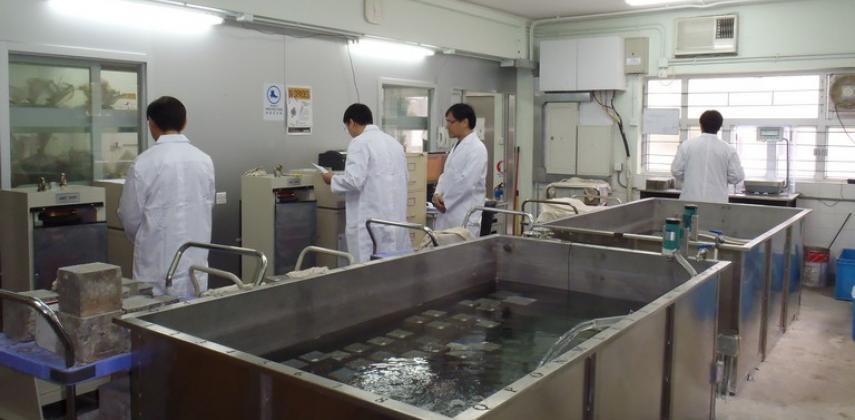Construction-materials testing is a lesser-known but critical component in the process of taking a structure off the blueprint and turning it into bricks-and-mortar reality.
Mega-projects such as the Hong Kong-Zhuhai-Macao Bridge (HZMB) involve different kinds of engineering works, including reclamation, bridge building and tunnelling. But in all of these, testing plays an essential role in safeguarding the standard of construction materials, the quality of work and - ultimately - human lives.
Because of this, the Civil Engineering and Development Department (CEDD), which is responsible for testing construction materials for the HZMB project, is now in the process of setting up a public works regional laboratory in Siu Ho Wan on the north shore of Lantau Island, near the Discovery Bay Tunnel Administration Building.
"The construction works for the laboratory buildings are now underway and are scheduled to be completed in April," says Tony Ho, a senior engineer with the standards and testing division at CEDD's Geotechnical Engineering Office.
"We will engage an engineering consultant to manage and operate the laboratory to deliver testing services," he adds.
At least 50 laboratory employees will be hired, including four senior site laboratory technicians, 28 site laboratory technicians, 14 laboratory assistants and three laboratory clerks. According to Ho, the CEDD will roll out a recruitment campaign between June and August to fill the vacancies.
"The consultant will be given four months to set up a laboratory quality system, train staff and obtain the Hong Kong Laboratory Accreditation Scheme certification for the testing services before the official opening of the Siu Ho Wan regional laboratory, which is scheduled for January 2013," Ho adds.
The laboratory will mainly carry out tests on aggregates, concrete and soils. It is estimated that it will conduct about 1.4 million tests on construction materials over a period of four years - more than twice the average output of each of the five other regional CEDD laboratories.
The HZMB project, which is scheduled to be finished by 2016, has a very tight construction programme. To cope with this challenge, the Siu Ho Wan laboratory will operate 18 hours a day - and even round-the-clock if needed - to provide uninterrupted testing services to meet the needs of the project.
Ho says that despite the heavy workload, the laboratory technician post should attract fresh graduates in civil engineering as it would be a good stepping-stone for the testing field.
"With the launch of the 10 major infrastructure projects, we see a huge demand for construction-materials testing services. Participating in such a mega-sized engineering project will be an excellent career exposure, and it will also be an exciting experience to witness the project from scratch to completion," Ho says.


